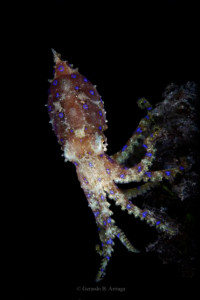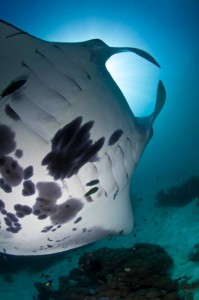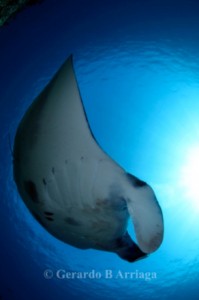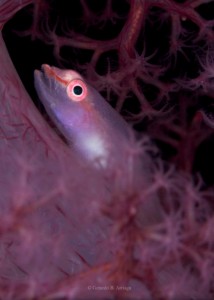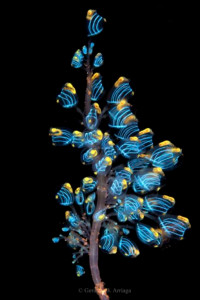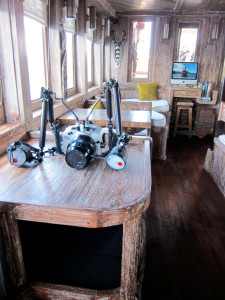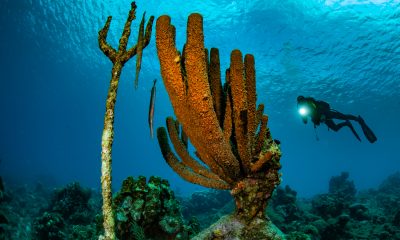Photo / Video News & Reviews
Learn to Love Underwater Photography
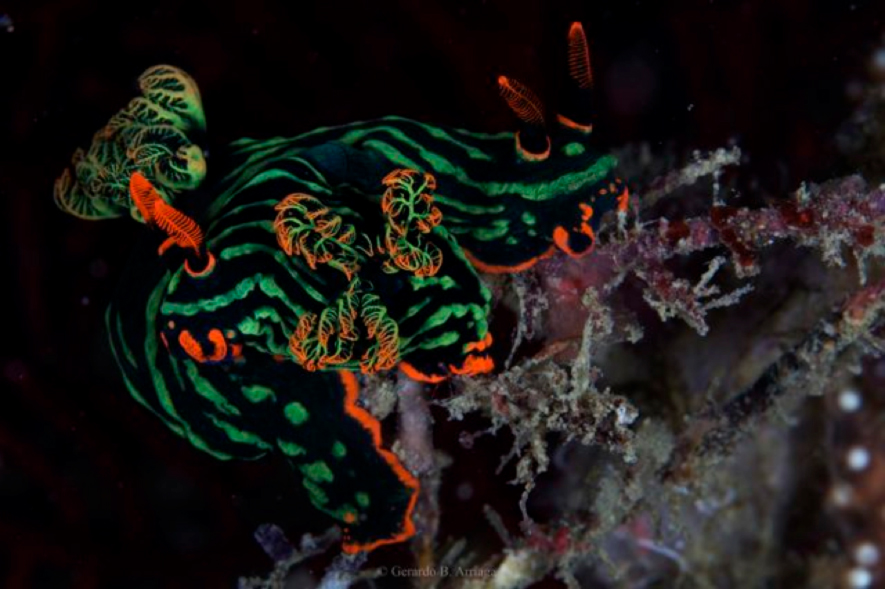
Laura Goddard of the Indonesian liveaboard Arenui talks about the advantages of signing up for an Underwater Photography workshop on a boat rather than at a dive resort
Article by Laura Goddard
Photos by Laura, Debbie and Jerry from Arenui
Photography can be a frustrating hobby, never more so than when you’re underwater. If you stop and think about some of the most challenging aspects of normal photography, such as keeping still so the shot is crisp and sharp, or getting the right light on your subject, it’s a wonder anyone ever tried to do it while wearing scuba gear! There are just so many things against us… like the sun moving behind a cloud without us realising from down at 15m, or the currents changing as you line up a shot of gently waving soft coral. Not to mention the actual marine life! Of course any wildlife photography is challenging when you can’t completely predict the creatures’ movements or willingness to participate, but underwater we have all three dimensions to deal with as our subjects potentially appear from behind, above, below (or all at the same time, if you’re lucky enough to be inside schooling barracuda).
So it would seem that budding underwater photographers need as much help as they can get. With plenty of pros willing to teach there has been a proliferation of underwater photography courses and even dedicated holidays. Sometimes these are run at dive resorts but often you can join up for a liveaboard with photography workshops included too. So what’s the best way to do it? Is it better to pop to a nice resort and sign up for some classes or is it better to book onto a special liveaboard cruise? Just as with dive holidays there are benefits to both resorts and liveaboards, but when it comes to learning or improving a skill like photography there are some great advantages to being out on a boat for a week or more with the same photo pros.
When you sign up for a photo course at a club or resort, you usually have to pack in as much practice as possible, in a specific window of time. Often classes can be a little bigger than you’d like and depending on how fast you improve you could find you don’t get as much one-on-one time with the pro. On the other hand, when you’re on a boat with the same group of people and the same instructor, it can be easier for everyone to get a turn for personal tuition.
Some guests find they benefit the most from post-dive workshops, breaking down the lessons learnt during the dive based on what critters or seascapes they all saw, but others are looking for advice on post-production so need some time at the computer station editing. It helps if the pros are happy using both windows and mac so that guests learn on the same system they’ll be using back home.
Generally, when you’re not watching the clock to see how much more time you have, it’s a more relaxing environment to study a skill and learn from an instructor, so the feedback from liveaboard photo cruises is very positive. It’s also useful to be ‘living’ with a pro where you can pick up less technical tips, so although you may find you learn a lot about composition, technique or editing, you may also pick up invaluable tips on how to attach accessories on your housing or how to fix the lights at a better angle. There’s also time to go into better dive techniques, like buoyancy and breathing that will help with photography skills, usually with a photo pro joining each group or buddy-pair for a few dives to see how each guest can improve.
One thing I learnt when trying to improve my own amateur photography underwater was not to get frustrated when things go wrong, as they inevitably do at some point. Even when you could kick yourself for doing something stupid, like letting your batteries die in the strobe, there’s usually a way around the problem – in the case of my lack of strobe on a beautiful hard coral dive, I just switched to black and white so instead of looking for colours I was concentrating on patterns and shades which actually made me appreciate the coral gardens in a new way and see things, like shapes and lines, that I hadn’t really noticed before.
But there’s one more thing to consider for an underwater photography course – where to dive! That’s as difficult as it is for any dive holiday, but if you’re considering improving your photography it would be a good idea to pick somewhere with as much variety as possible. You might expect to like muck diving but then find you’re actually a fan of wide-angle shots, or perhaps you’ve had success with great coral images when a little time on critters would be a refreshing inspiration.
Here at the Arenui we think we’re lucky to be in one of the world’s best locations for getting great images. Indonesia is truly a photographers’ dream location, as it offers such diverse underwater life with incredible hard corals but also stunning and colourful soft corals. With swim-thrus and overhangs, as well sea mounts and caves, there are also ample opportunities to try out some artistic shots. Then there are the varieties of fish life from the very tiny to the really large, so make sure to bring both the macro and wide-angle lenses.
Why choose Indonesia as an underwater photography destination?
The Indonesian archipelago, located within the Coral Triangle, boasts the world’s highest marine biodiversity and offers truly unique diving in a picturesque island setting. This region is truly a dive mecca and high on most divers’ wish-list. This triangle is home to the world’s most bio-diverse population of marine species with Indonesia representing its hottest spot.
Nowhere else has a comparable density, not to mention diversity, of underwater creatures and life been recorded. In order to fully appreciate the exceptional status of this region, suffice it to say that the whole Caribbean area has only 9% of the corals and 35% of the fish species found in Indonesian waters.
The reason for such a big difference is that the entire area of the Atlantic Ocean underwent a mass extinction of species during the last ice age. All types of corals and animals vanished during this period and the other species never regained the strength of their former numbers.
In Indonesia – the centre of this biodiversity triangle – the variety seen underwater is truly astonishing. In certain bays and around small islands, you can find more species than in the entire Caribbean. In a research report conducted in 1997 on the island of Flores, respected marine biologists Rudie Kuiter and Gerald Allen counted 1,133 species of fish just in Maumere bay. This is still the highest number of species of fish ever counted in a specific area.
In Raja Ampat, the same Gerald Allen, world-famous ichthyologist, counted the incredible number of 284 different species of fish counted during a single dive. In the same area, 465 different species of corals were found. As a result, scientists nowadays believe that this destination is the world’s current no. 1 spot in terms of biodiversity.
In Indonesia, whether it’s nudibranchs and rhinopias you’re after, or manta rays and schooling fish, this region really has it all. From black sand muck dives to crystal clear drift dives, from warm water to cold, Indonesia is a place to visit time and time again; once is never enough!
Upcoming underwater photography trips on the Arenui
If you’re keen to join a liveaboard photography cruise, here are 2 upcoming trips on the Arenui with a photo pro onboard (diving from Alor to Raja Ampat and Triton Bay), but keep a look out online for new photo trips coming soon:
DISCOVER ALOR, RAJA AMPAT AND TRITON BAY WITH MARK STRICKLAND
– 2014 Alor 11N Cruise: Embark MAUMERE on 22nd April, disembark MAUMERE on 3rd May
– 2015 Raja Ampat & Triton Bay 13N Cruise: Embark SORONG on 18th March, disembark SORONG on 31st March
On these trips, learn from professional underwater photographer Mark Strickland as we take you (and your camera) to visit some of the most photogenic dive sites in the world and meet some of the most unusual creatures in the ocean. Mark’s life-long interest in the sea has included over 10,000 dives and careers as lifeguard, boat captain and scuba instructor. His passion for underwater photography has led him to many top dive locales, including Thailand, where he spent 17 years as Cruise Director on a series of liveaboards. An avid marine naturalist, Mark has discovered several nudibranch species. He is co-author and principle photographer for Lonely Planet’s award-winning book, “Diving and Snorkeling Thailand”, and his work appears in many magazines, books and displays around the world. Currently, Mark leads several dive trips each year to his favorite destinations, while working on a career-spanning large-format pictorial book. For more on Mark’s photography and these trips, go to; www.thearenui.com/Mark-Strickland.html
To find out more about the Arenui liveaboard and the itineraries on offer please visit www.TheArenui.com
Blogs
Diver Discovering Whale Skeletons Beneath Ice Judged World’s Best Underwater Photograph
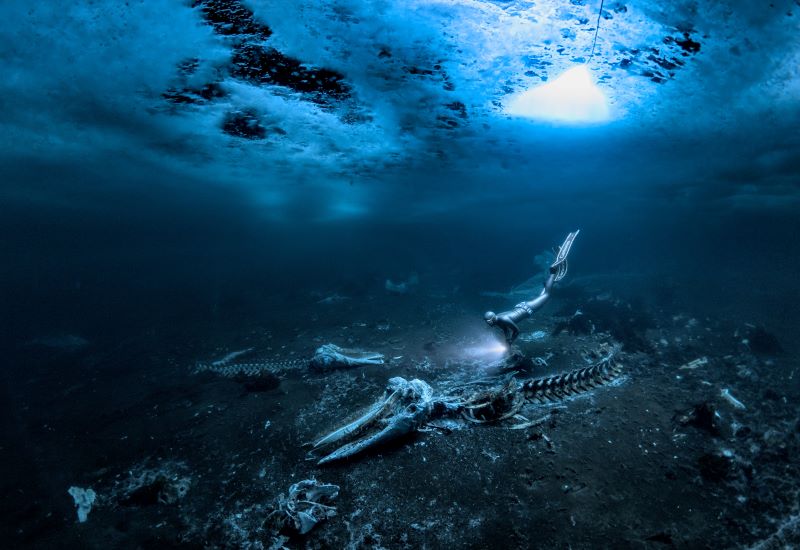
An emotive photograph showing a freediver examining the aftermath of whaling sees
Alex Dawson from Sweden named Underwater Photographer of the Year 2024. Dawson’s
photograph ‘Whale Bones’ triumphed over 6500 underwater pictures entered by underwater
photographers from around the world.
“Whale Bones was photographed in the toughest conditions,” explains chair of judging
panel Alex Mustard, “as a breath-hold diver descends below the Greenland ice sheet to bear
witness to the carcasses. The composition invites us to consider our impact on the great
creatures of this planet. Since the rise of humans, wild animals have declined by 85%. Today,
just 4% of mammals are wildlife, the remaining 96% are humans and our livestock. Our way
needs to change to find a balance with nature.”
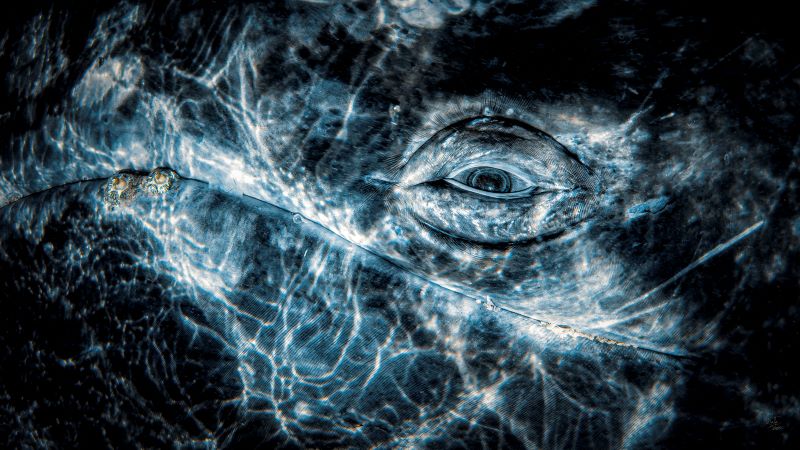
Photo: Rafael
Fernandez Caballero
Whales dominated the winning pictures this year with Spanish photographer Rafael
Fernandez Caballero winning two categories with his revealing photos of these ocean giants:
a close up of a grey whale’s eye and an action shot of a Bryde’s whale engulfing an entire bait
ball, both taken in Magdalena Bay, Baja California, Mexico. Fernandez Caballero took ‘Grey
Whale Connection’ while drifting in a small boat, holding his camera over the side in the water
to photograph the curious whale. ‘The End Of A Baitball’ required Fernandez Caballero to dive
down and be in exactly the right place at the moment the whale lunged. “The photo shows
the high speed attack,” he said, “with the whale engulfing hundreds of kilograms of sardines
in one bite — simply unforgettable to see predation on such a scale.”
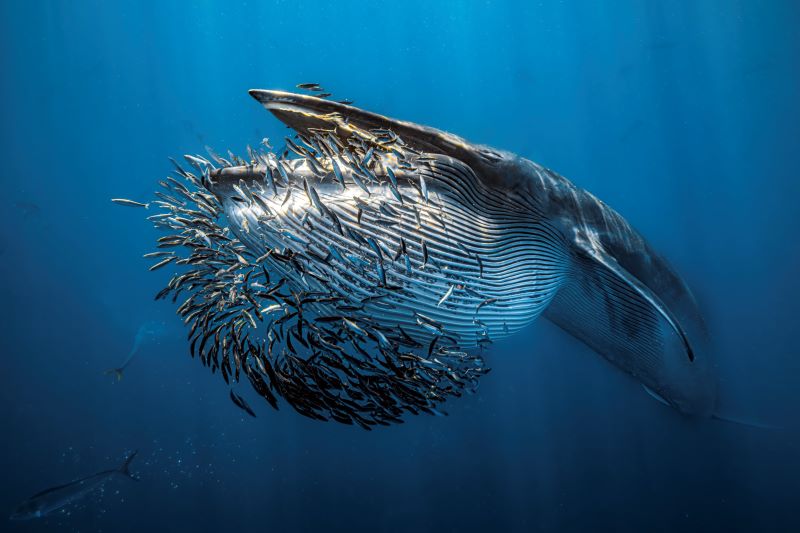
Photo: Rafael
Fernandez Caballero
Lisa Stengel from the United States was named Up & Coming Underwater Photographer of the Year 2024 for her image of a mahi-mahi catching a sardine, in Mexico. Stengel used both a very fast shutter speed and her hearing to catch the moment. “If you listen there’s an enormous amount of sound in the ocean,” she explained. “The action was too fast to see, so I honed in on the sound of the attacks with my camera to capture this special moment.”
“It is such an exciting time in underwater photography because photographers are capturing such amazing new images, by visiting new locations and using the latest cameras,”
commented judge Alex Mustard. “Until this year I’d hardly ever see a photo of a mahi mahi,
now Lisa has photographed one hunting, action that plays out in the blink of an eye.”
The Underwater Photographer of the Year contest is based in the UK, and Jenny Stock,
was named as British Underwater Photographer of the Year 2024 for her image “Star
Attraction”, which finds beauty in species of British wildlife that are often overlooked.
Exploring the west coast of Scotland, Stock explained “in the dark green depths my torch
picked out the vivid colours of a living carpet of thousands of brittle stars, each with a
different pattern. I was happily snapping away, when I spotted this purple sea urchin and I
got really excited.”
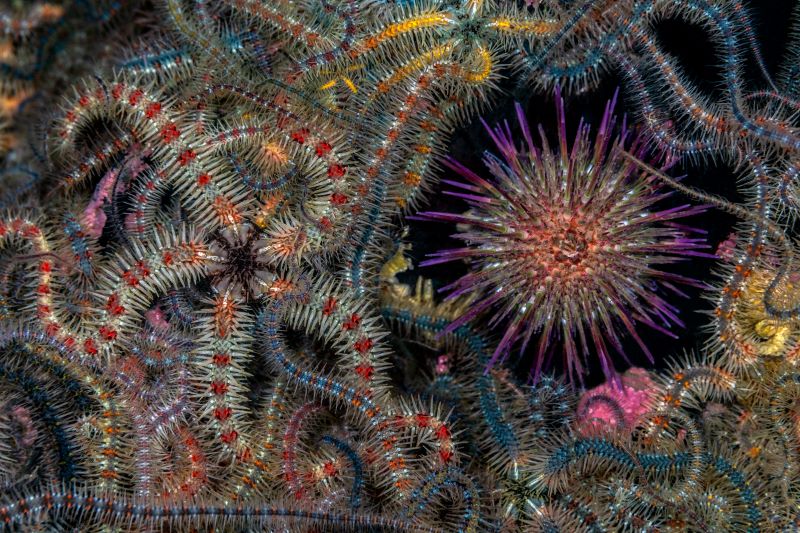
Photo: Jenny Stock
In the same contest, Portuguese photographer, Nuno Sá, was named ‘Save Our Seas
Foundation’ Marine Conservation Photographer of the Year 2024, with his photo ‘Saving
Goliath’, taken in Portugal. Sá’s photo shows beachgoers trying to save a stranded sperm
whale. The picture gives us hope that people do care and want to help the oceans, but also
warns us that bigger changes are needed. “The whale had been struck by a ship and its fate
was sealed,” explains Sá. “An estimated 20,000 whales are killed every year, and many more
injured, after being struck by ships-and few people even realise that it happens.”
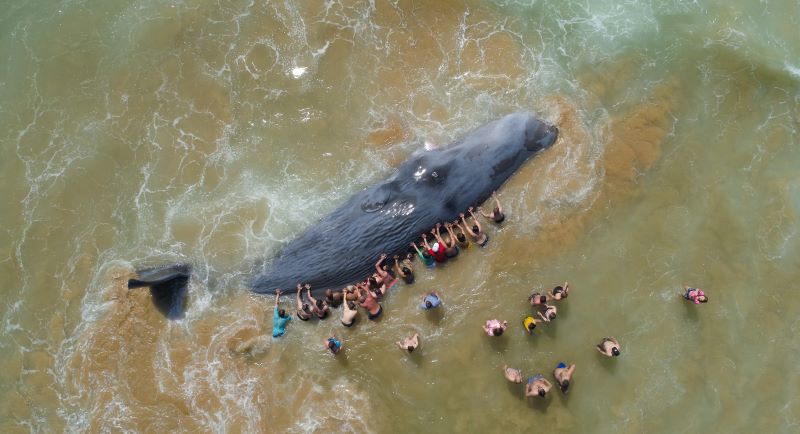
Photo: Nuno Sá
More winning images can be found at www.underwaterphotographeroftheyear.com.
About Underwater Photographer of the Year
Underwater Photographer of the Year is an annual competition, based in the UK, that celebrates photography beneath the surface of the ocean, lakes, rivers and even swimming pools, and attracts entries from all around the world. The contest has 13 categories, testing photographers with themes such as Macro, Wide Angle, Behaviour and Wreck photography, as well as four categories for photos taken specifically in British waters. The winners were announced in an award ceremony in Mayfair, London, hosted by The Crown Estate. This year’s UPY judges were experienced underwater photographers Peter Rowlands, Tobias Friedrich and Dr Alexander Mustard MBE.
Header image: Underwater Photographer of the Year 2024 winner Alex Dawson
News
World’s Best Underwater Photographers Unveil Breathtaking Images at World Shootout 2023
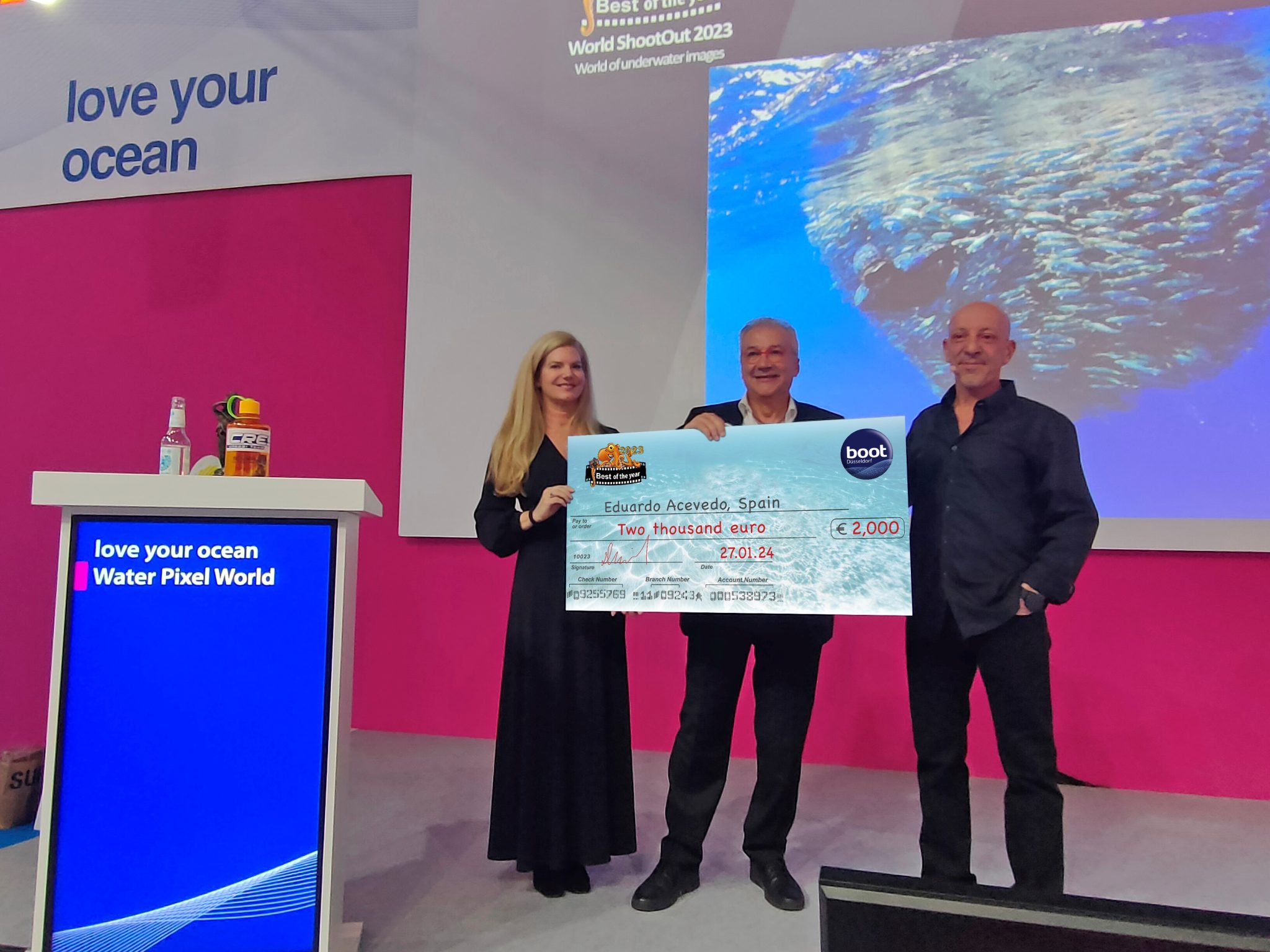
The winners of the prestigious World Shootout 2023 underwater photography competition were announced at this year’s BOOT Show, captivating audiences at the world’s largest diving and water sports exhibition in Dusseldorf, Germany. Hundreds of photographers from 54 countries competed across nine categories, pushing the boundaries of creativity and technical skill.
Grand Prize Winners
- Picture of the Year: Spanish photographer Eduardo Acevedo “secured” the top Honor with the prestigious prize the “boot Dusseldorf Director’s Prize, earning an Andromeda statuette and a €2,000 cash prize.
- Best 5 Images Portfolio: Luc Rooman from Belgium triumphed in this category, winning a dream 4-week diving trip for two to Papua New Guinea, valued at $18,900.
- Amateur Photographer: Alexandra Ceurvorst from the USA impressed the judges with her talent, taking home the 1,000 € cash prize award.
Celebrating Diversity and Innovation
This year’s competition saw 11,680 entries from 964 photographers, showcasing a remarkable spectrum of skills and perspectives. From the intricate wonders of Macro photography to the beauty of “Black Water”, the “Underwater Fashion” category added a touch of artistry and innovation, while the ever-important ” Environmental & Conservation” category served as a powerful reminder of the need to protect these fragile ecosystems.
Looking Ahead: AI and Ocean Conservation
World Shootout founder and producer David Pilosof unveiled an exciting addition for the 2024 competition: this year the Environmental category will be focusing on the impact of plastic on our oceans and future.
This category will embrace the potential of AI or other editing software as a tool to amplify the conservation message.
Entrants will submit campaigns of three original underwater photographs dealing with plastic pollution, along with their final AI assistance processing. This innovative approach encourages artistic expression while raising awareness about a critical environmental issue.
Explore the Stunning Collection
Discover the complete album of competition entries by clicking here.
For Low-resolution photos of finalist entries in eight categories, click here.
-

 News3 months ago
News3 months agoHone your underwater photography skills with Alphamarine Photography at Red Sea Diving Safari in March
-

 News2 months ago
News2 months agoCapturing Critters in Lembeh Underwater Photography Workshop 2024: Event Roundup
-

 Marine Life & Conservation Blogs2 months ago
Marine Life & Conservation Blogs2 months agoCreature Feature: Swell Sharks
-

 Blogs1 month ago
Blogs1 month agoMurex Resorts: Passport to Paradise!
-

 Gear News3 months ago
Gear News3 months agoBare X-Mission Drysuit: Ideal for Both Technical and Recreational Divers
-

 Blogs2 months ago
Blogs2 months agoDiver Discovering Whale Skeletons Beneath Ice Judged World’s Best Underwater Photograph
-

 Gear Reviews2 months ago
Gear Reviews2 months agoGear Review: Oceanic+ Dive Housing for iPhone
-
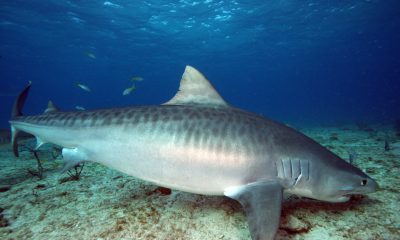
 Blogs3 months ago
Blogs3 months agoThe Thrilling Encounter with Tiger Sharks at Beqa Lagoon’s ‘The Colosseum’ with Coral Coast Divers


